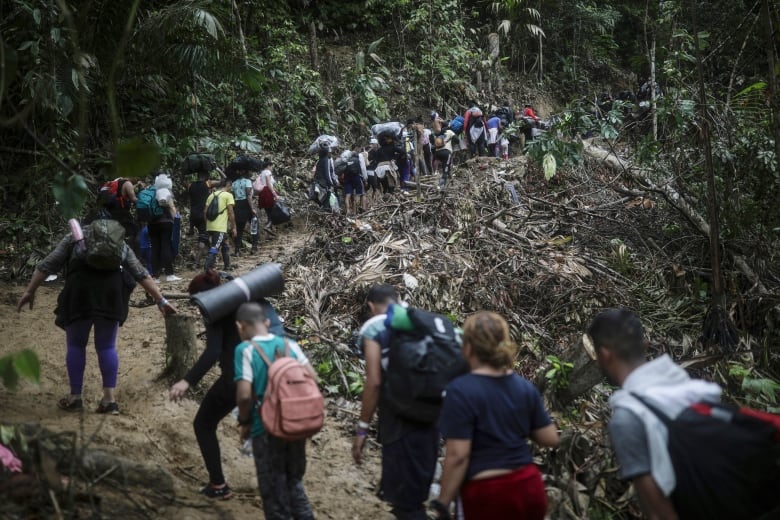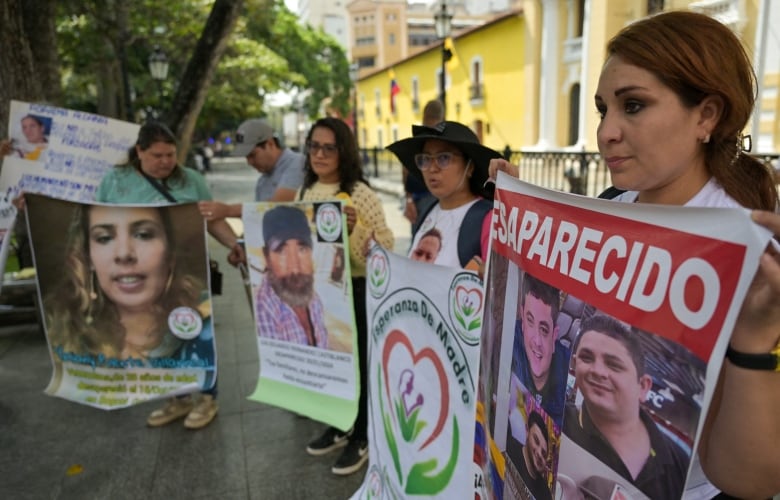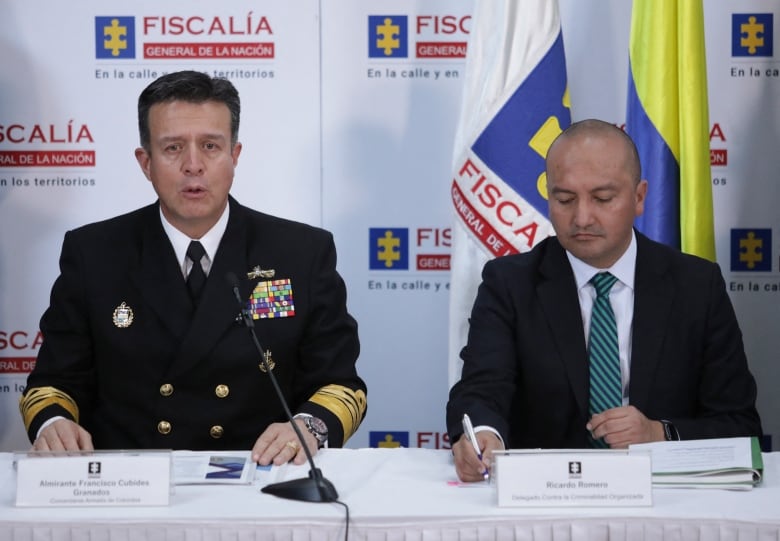
When Mafer González set foot on land after a gruelling 10-hour boat journey from the Colombian island of San Andrés last October, she said it felt like her soul had returned to her body.
González and the 17 other Venezuelan migrants who’d crossed the Caribbean waters to Nicaragua in a small fishing boat had been lucky — the weather had been mild and the sea relatively calm. Yet the speed at which they were travelling for part of the trip made her fear for her life and those of her two children, ages three and six.
“The boatman told us to crouch down and hug each other so that no one would fall out,” the 30-year-old Venezuelan said. “We were like this until we couldn’t see the lights from San Andrés anymore.”
They’d left the island by boat at 9 p.m. on a stiflingly warm evening, having each paid substantial sums of money to smugglers for passage to Corn Island, Nicaragua.
All were heading to the U.S., where they hoped they’d find a better future.
A decade-long economic and humanitarian crisis in Venezuela has led to low wages and the near collapse of public services and health care. Nearly eight million citizens — a quarter of the population — have left for other countries.
San Andrés typically lures tourists with its white sand beaches and turquoise waters, but it’s also part of what’s become known as a “VIP” route for asylum seekers and migrants.
Those with the financial means who aren’t eligible for visas to enter countries north of Colombia can use the route to avoid walking across the Colombia-Panama border — a treacherous jungle area called the Darién Gap — shaving weeks off their journeys to the U.S.
But the clandestine trip exposes desperate people to unpredictable weather, ferocious seas and a lucrative yet dangerous underworld where hundreds of people have had to be rescued at sea and dozens of others have vanished.
‘VIP’ packages promoted on social media
Colombia has long been a popular destination for many migrants as visa restrictions there and in other South American countries are more lax than in Central America.
Social media and word of mouth have become key tools for those wanting to discover routes to the U.S. and connect with smugglers. Digital flyers, route details and price lists circulate in migrant Facebook groups.
A grainy TikTok video shot in a plane advertises the San Andrés to Nicaragua boat route and features a woman’s voice saying the trip is “100 per cent recommended.” The post, dated Sept. 5, 2024, has more than 17,000 views and dozens of comments in Spanish asking for prices and more information.
While migration isn’t a crime, trafficking migrants is — and passengers are often put in extreme danger. But it’s a lucrative industry, and for smugglers the risks are outweighed by the handsome sums of money migrants are willing to hand over.
Venezuelan Dennis Armando Paredes paid $2,600 US ($3,524 Cdn) for a journey from Bogotá, Colombia, to southern Mexico, via San Andrés.
Prices generally start at $1,300 US ($1,762 Cdn) for trips to Nicaragua and rise for longer distances. Some nationalities, such as Chinese and Afghans, are charged considerably more — often up to $6,000 US ($8,130 Cdn.)
In 2017, amid the humanitarian crisis in Venezuela, Paredes migrated to Peru where he met his Peruvian wife, Nelly Durán.
There, the pair ran a successful fast-food business, but said they were being extorted by a local gang who told them they’d have to pay the money for security reasons.
They saw the U.S. as a safe place where they could work and start a family. Since Durán, a Peruvian national, could fly directly to Mexico without a visa, they planned to reunite there after Paredes took the San Andrés route.
Although San Andrés belongs to Colombia, it’s geographically closer to Nicaragua — just 100 miles west of Corn Island.
It’s often advertised as a quicker and safer alternative than hiking the Darien Gap, where migrants are vulnerable to robberies, wild animals and strong river currents.

“They told us that it was a safe route, that it was a VIP route, that in three hours he’d arrive in Nicaragua,” Durán told CBC News.
In reality, the crossing takes much longer, and despite the route being promoted as secure, Paredes never arrived.
Danger, despair and disappearances
The first time Paredes attempted the crossing, the boat he was on was picked up by the coast guard in stormy weather. He was sent back to Colombia’s capital of Bogotá and told he wouldn’t be allowed to return to San Andrés.
But a few days later — after his smuggler got him a fake ID — he returned to the island and attempted the crossing again.
The Colombian Navy has rescued 224 people so far in 2024 trying to reach Nicaragua from San Andrés — although it’s unknown how many have made the trip successfully.
People have been found in boats, floating in the water and abandoned on small islands. Last year, The figure was 453 for the whole of 2023.
“We’ve had to rescue babies — just months old — from people’s arms,” said Colombian Navy Captain Guillermo Lozano, who is in charge of operations against illegal activities, including drug and migrant trafficking in the waters of San Andrés.
At the coastguard station on San Andrés, he showed CBC News that the boats aren’t usually authorized or safe enough to carry passengers and often don’t have life jackets.
“Generally, they use artisanal fishing boats that aren’t more than two metres wide,” Lozano explained, pointing at several seized boats. He said most of the boats carry 22 to 30 people each.
There were 42 people on the boat Paredes used, according to the Colombian Navy.
A final call
On Oct. 21, 2023, Durán briefly spoke to her husband, who told her he was waiting by a bonfire on the fringes of the San Andrés shoreline.
“His parents wanted to say goodbye, too, but he cut the call short because he said they’d been told phones weren’t allowed,” she recalled. “He told me he’d try to contact me discreetly as they set off.”
They ended their call at 6:45 p.m., and that was the last time Durán heard from her husband.
The next day, she got a call from the smuggler saying the boat had disappeared — 40 passengers, including Paredes, and two crew had simply vanished.

“I went into shock. I thought it was some terrible joke,” Durán said. “I can honestly say it was the worst day of my life.”
Neither the boat, nor any of the people on board have ever been found. Durán and other families believe this means kidnapping was involved, and that their loved ones are still alive.
The Attorney General’s Office has been investigating different theories about what happened to the boat, but say that so far, the evidence they have points to a shipwreck.
Crime and corruption
Investigating and putting an end to boat disappearances, shipwrecks and the general migrant trafficking networks has been made more complex due to corruption on the island.
González says as her group was waiting in a small, dark house to leave San Andrés, three police officers arrived.
“They told us we had to give $100 per person, otherwise they’d deport us — and even take our kids off us.”
The Attorney General’s Office in Colombia told CBC News that there is “no doubt” public officials have been involved in the trafficking of migrants.

According to the Attorney General’s Office, the radar used by the navy that detects boats in the water was often turned off when migrant boats were leaving the island, or would be reported as damaged. They said the radar was supposedly not functioning the night the boat Paredes was on went missing.
In December 2023, the Attorney General’s Office announced the dismantling of a migrant trafficking network that resulted in the arrest of 24 people. The official with the Attorney General’s Office later confirmed to CBC News that at least three of those arrested were members of the Colombian Navy.
While officials say corruption within the navy make rescues harder, so too does the constantly changing nature of the migrant business.
“They’re always evolving their strategies,” said Lozano, the navy captain, of the traffickers. “They’re adapting other measures so they’re not detected.”
When González arrived in the U.S. in December, she and her children made their way to Chicago, where she found a job. As they get used to their new lives, she feels like she and her family will finally have the better future she wanted.
But she doesn’t hesitate when asked if she would recommend the San Andrés route to anyone else.
“No,” she said. “It’s difficult, very difficult.”
González knows that she and her children were fortunate to make it to the U.S. safely, while others haven’t been as lucky.
“It’s a risk that you take without knowing how it will turn out.”